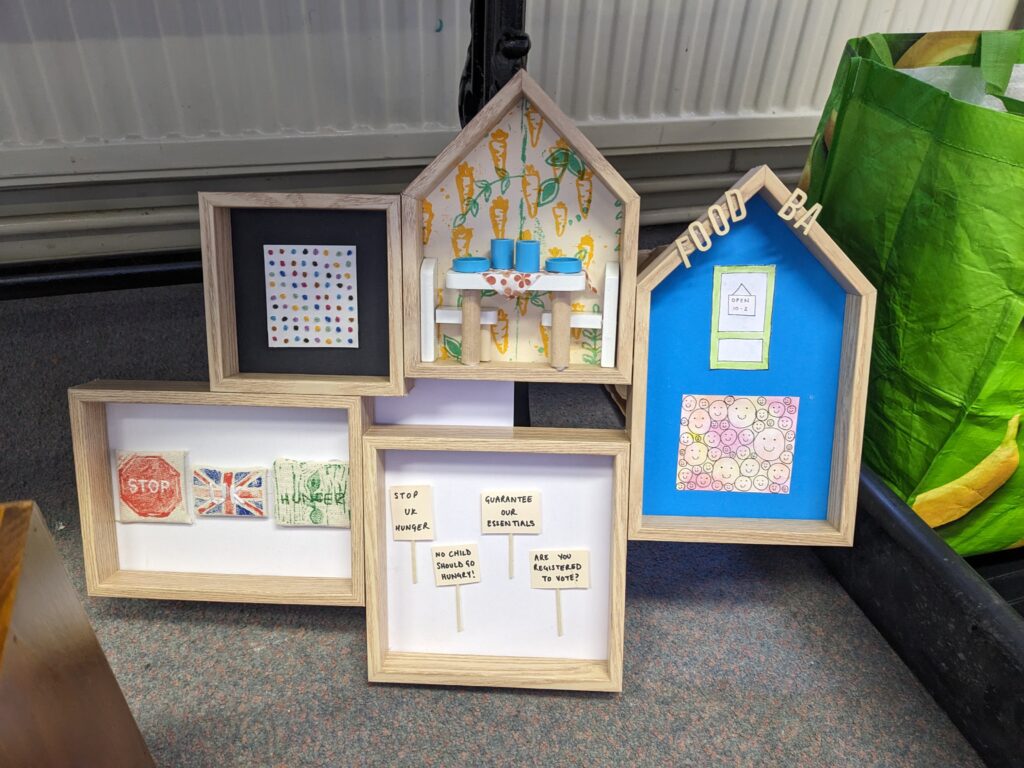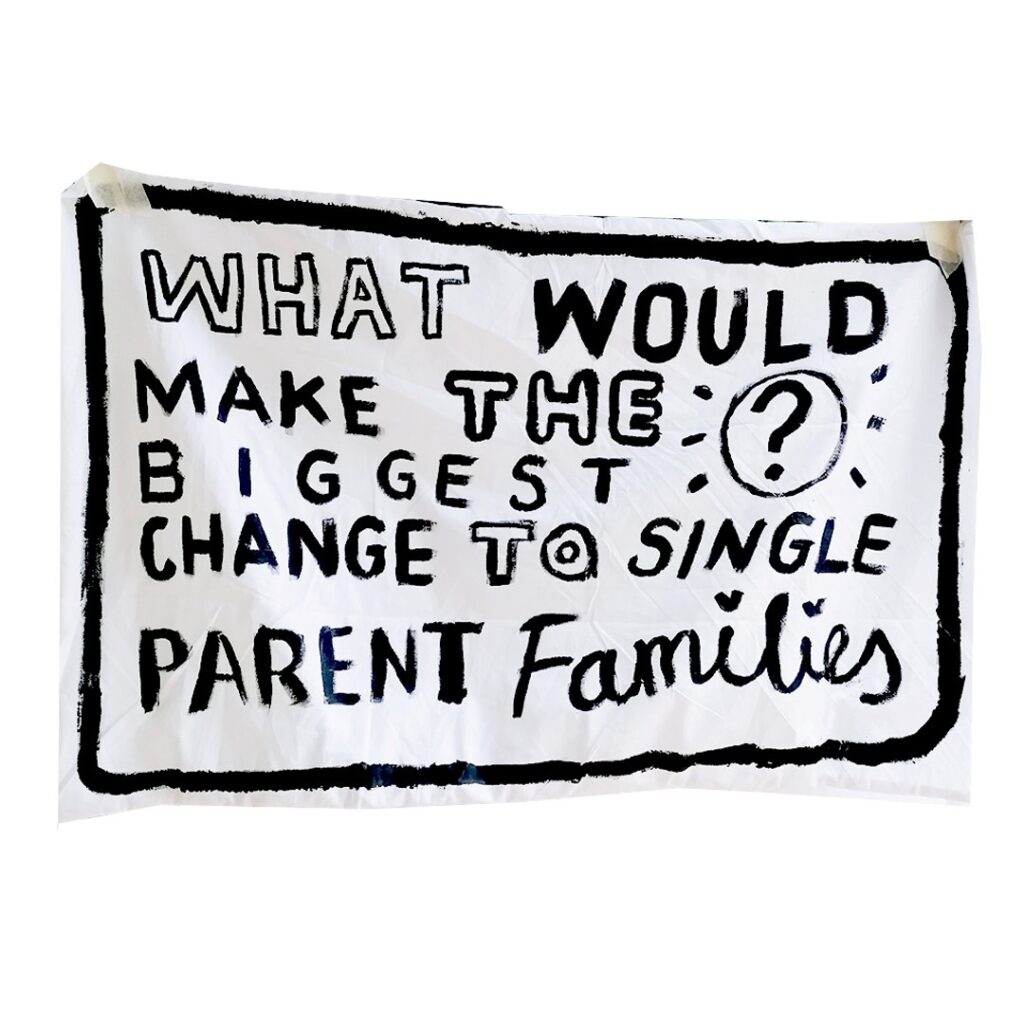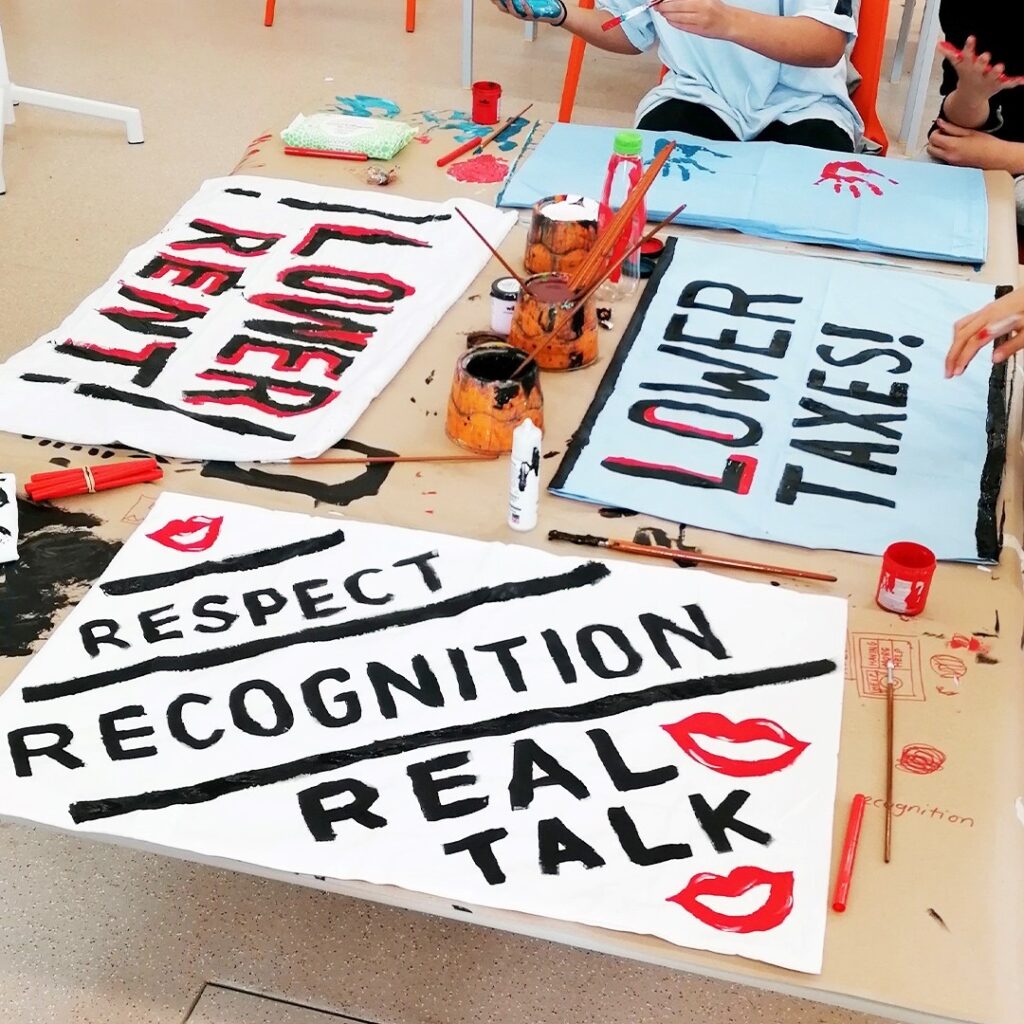Who is seen as a ‘typical’ person doing community and activist work?
Some participants spoke about their activist journeys, while others did not overtly identify as an ‘activist’. This section explores the plurality of experiences, and the moments or ‘pockets’ of resistance that participants described – and the creative interventions they made. Some of the stories document the ways that Fun Palaces have been “catalytic events”, as one participant framed it, for people becoming more involved in their communities.
Audio:
“…if you want things to change, you just have to make them change, don’t you?”
“A few of us were inspired to challenge policies in the town.”
“[I have] built relationships in the community and [it] has inspired more working together for common goals”

“…being part of creating my own little moments for change”
“I am I guess quite an organiser; I sometimes refer to myself as an agitator…a rabble-rouser.”
“I lead people astray, but I do think that being part of something, so joining in the town parades, being part of a Fun Palace, means that next time there’s a town event, maybe not even in this town but in the next town over, or the next time they might hear of a Fun Palace in the next town over or in a different venue, because they’ve already had that engagement and it was positive, they might try that. It’s about building that confidence and I think you have to… its real foundations, it needs to be solid, people need to feel safe. Some of the families that we work with don’t go to any other activity other than the one that we provide…And then one day they do, one day I see them at a parade, they might not be in the parade with us, but they’re there and that’s just amazing. Then they wave and then they feel like they’re part of it so the next time they may come and make the artwork and they may join in.”
“I think um, anything that gets people creatively and actively involved in, in community, in making, there’s a process of, of, that goes alongside that, that it’s not just about the making, which is really important because you’re building skills, you’re sharing skills and all of that builds confidence, which then once confidence is built, then you’re more likely to be an active participant in other things. So we see that, you know, with people getting involved in things…Um, but there’s also the process that happens while you’re doing. So while you’re doing is a time when people talk about sometimes really important things to them. Because they find themselves in a place where they’re welcomed, engaged, their skills are valued, they’re maybe getting to teach someone something…You know, all of those things which um, create a dynamic where people are more likely to speak up, to listen.”
“I was living away, erm, abroad and I came back to [Town] about a year and a half ago. Erm, and so, I didn’t really know anybody, erm, and I wanted to sort of meet people and, and find places where I could get involved with art and music, erm, not just for myself but for my kids as well, who are 10 and 13 years old now. So, we saw, erm, advertised through [organisation name] something about a foraging, erm, walk along the canal side and I remembered when I
was at school like being able to sort of recognise, er, different leaves and things, and I just thought it would be fun for the kids to be able to…learn something new like that, like a new skill. So, we did that. They really enjoyed it. Er, and then we were talking to the guy that organised, erm, the walk, er, and he told us a lot more about [organisation name] and then so we came here to [organisation name]. And then that’s how I got involved with the Fun Palaces as well.
But also, lots of other different activities, erm, so, er, there were Saturday socials, erm, with like Ukrainian members of the community and, and everybody else as well, but, erm, just different taster sessions of different activities and different events that you could kind of sign up for…And these ranged from like art, music, er, it was like juggling and you know things that for me I’d never tried, or I hadn’t maybe had the opportunity to do for myself, but I had to put on for others, erm, sort of in my previous work. And so, I’d done a lot of art and stuff and, and theatre, erm, but I wanted more for the kids to be able to kind of get involved in things like that. So, that was nice.

But then since then, erm, been involved in so many other different projects in the community from sort of gardening clubs and greenhouse projects and the Wildlife Trust and you know, just it all kind of came from, erm, [organisation name] being sort of so accessible in terms of being able to attend many different taster sessions and different events, but also giving out so much information about what is also happening around. Erm, so, like for me and my daughters in the Festival of, of Light, Drumming Band, she loves that…so, it’s, it’s really great to be involved…it’s really lovely to be involved in the community, but also to go on and do other things like volunteering as well. Erm, but it’s also nice just to be able to meet people, and I’ve met some really nice people. …But then the other week they were like, “What? You didn’t live here? So, you haven’t known these people for like years and years?” And I’m like, “I’ve only been here like a year and a half,” and everyone’s like, “Really?” (Laughs) So, yeah, but that’s nice. That’s good.”
“It stems from me, as a child, all the things that I wish I had. I grew up with migrant parents who didn’t really understand art in that sense…they grew up in the war- torn country. So art was not one of their things that they’d be appreciating. It was about survival. “We need to get you that degree, that education. That’s going to help you. Arts is not going to…” so it was very much about survival. But I just absolutely adored drawing. And not having much in my house, I’d always make stuff out of anything I could find. Then, that’s where my obsession with corrugated card grew because I started to be… I remember, as a kid, I was like, “I can literally make anything out of card.” And that is mad because that because my job, making stuff out of corrugated card. I just remember thinking, “Gosh, if I could go to little me now and be like, ‘You’re going to get a job making stuff out of card,’ she’d probably faint.” So that was really nice.
And then, like you said, I wanted to give that because I just knew from how it felt, never feeling, “Oh, that’s for me,” or having parents that were interested in that sort of thing. It was about going and giving it to people and saying that, “It is very much for you,” because I see kids who, at some of my workshops, when they sit down and they have done it, they get such a sense of achievement that they’ve completed something. And it’s just… that, for me, is why I do it.

So just taking it out, I think, comes from my childhood and remembering that feeling. So now, I’m just… that’s why I’m more active because I remember that feeling of… or I was that kid peering in, thinking, “It’s not for me,” but wanting to go inside. So I’m inspired by little me inside, and that’s why a lot of my workshops are about giving people skills and access to materials that they’d never have at home. I didn’t have that at home, but if I did, my gosh, you know? Or a lot of people with migrant backgrounds, their parents are very busy. Again, arts is not their main priority. They’ve got to go to work. And to have that time, meaning in a workshop, it’s about me, as well, giving families and children the time to talk to them about skills and going through the process of how things work. So I think that’s part of it, as well, than just saying, “Oh, here’s the activity.” It’s about sitting down with them.”
